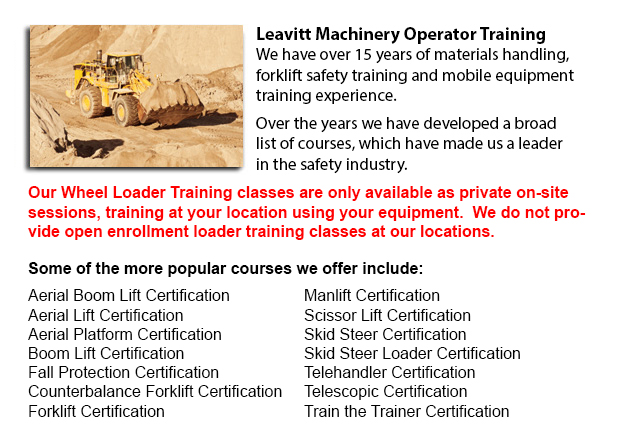
Forklifts are accessible in a wide range of load capacities and various models. Most forklifts in a regular warehouse setting have load capacities between 1-5 tons. Bigger scale models are used for heavier loads, like loading shipping containers, can have up to 50 tons lift capacity.
The operator can use a control in order to raise and lower the blades, which can likewise be called "blades or tines". The operator of the forklift has the ability to tilt the mast so as to compensate for a heavy loads tendency to angle the blades downward. Tilt provides an ability to function on bumpy surface as well. There are annual contests intended for skilled forklift operators to contend in timed challenges as well as obstacle courses at regional lift truck rodeo events.
General use
Lift trucks are safety rated for loads at a specific limit weight and a specified forward center of gravity. This very important information is supplied by the manufacturer and situated on a nameplate. It is vital cargo do not go over these details. It is against the law in lots of jurisdictions to tamper with or remove the nameplate without getting consent from the lift truck manufacturer.
Most lift trucks have rear-wheel steering in order to improve maneuverability inside tight cornering conditions and confined areas. This particular type of steering varies from a drivers' initial experience with different motor vehicles. In view of the fact that there is no caster action while steering, it is no essential to apply steering force to be able to maintain a constant rate of turn.
Unsteadiness is one more unique characteristic of forklift use. A constantly varying centre of gravity takes place with each movement of the load amid the forklift and the load and they need to be considered a unit during operation. A forklift with a raised load has gravitational and centrifugal forces which can converge to cause a disastrous tipping accident. So as to avoid this from happening, a lift truck should never negotiate a turn at speed with its load elevated.
Lift trucks are carefully built with a load limit utilized for the blades. This limit is decreased with undercutting of the load, that means the load does not butt against the fork "L," and also lowers with blade elevation. Usually, a loading plate to consult for loading reference is situated on the forklift. It is unsafe to utilize a forklift as a personnel hoist without first fitting it with specific safety equipment like for instance a "cherry picker" or "cage."
Forklift utilize in warehouse and distribution centers
Important for every distribution center or warehouse, the lift truck has to have a safe setting in which to accommodate their efficient and safe movement. With Drive-In/Drive-Thru Racking, a lift truck needs to travel within a storage bay which is several pallet positions deep to put down or obtain a pallet. Operators are often guided into the bay through rails on the floor and the pallet is positioned on cantilevered arms or rails. These tight manoeuvres require trained operators to be able to complete the task safely and efficiently. In view of the fact that every pallet needs the truck to enter the storage structure, damage done here is more frequent than with various types of storage. When designing a drive-in system, considering the size of the blade truck, including overall width and mast width, need to be well thought out in order to ensure all aspects of an effective and safe storage facility.
-
Crane / Overhead Crane / Self-Erect Crane / Truck Mounted Crane / Hydraulic Cranes Training in Markham
Bridge cranes or overhead cranes are a kind of industrial material handling crane making use of a hook and line apparatus that runs on a horizontal beam running along two widely separated rails. Many overhead cranes could be seen inside a long factor... More -
Manlift Ticket Markham
Manlift Ticket Markham - The Manlifts and Elevated Platforms program provides training on the regulations, rules and correct application of safe operating procedures and work practices involved in everyday activities for individuals who work with thi... More -
Aerial Lift Train the Trainer Markham
Aerial Lift Train the Trainer Markham - The Aerial Lifts Train the Trainer Certification Program will teach trainers how to effectively train operators in safe industrial mobile equipment operation. Trainers are given in-depth instruction on aerial l... More -
Loader Operator Training Markham
Loader Operator Training Markham - Loader Operator Training - Within North America, lift truck operator training is required to be able to prevent workplace injuries and accidents. Certain forklift training would be provided to be able to offer forkl... More -
Aerial Boom Lift Ticket Markham
Aerial Boom Lift Ticket Markham - Aerial lift trucks can be used to accomplish many unique duties done in hard to reach aerial spaces. A few of the duties associated with this style of jack include performing daily repair on buildings with high ceili... More -
Boom Lift Operator Training Markham
Boom Lift Operator Training Markham - The cherry picker work platform is a type of work platform, that will usually have a bucket or platform at the hydraulic lifting system's end. The machine is likewise called a boom lift, man lift, hydraladder or... More -
Boom Lift License Markham
Boom Lift License Markham - Just fully qualified individuals must operate an aerial boom lift. Qualification can be obtained through a combination of classroom sessions and practical training with the particular kind of aerial lift that will be used... More -
Telehandler Training Courses Markham
Telehandler Training Courses Markham - The employer has the responsibility to make certain that their workers are trained to work proficiently with telehandler machines. The staff have to be assessed for their skill to utilize the equipment. If defic... More

Forklift Training Markham
TOLL FREE: 1-888-254-6157
Markham, Ontario
forklifttrainingmarkham.com
Email Us
About Us


